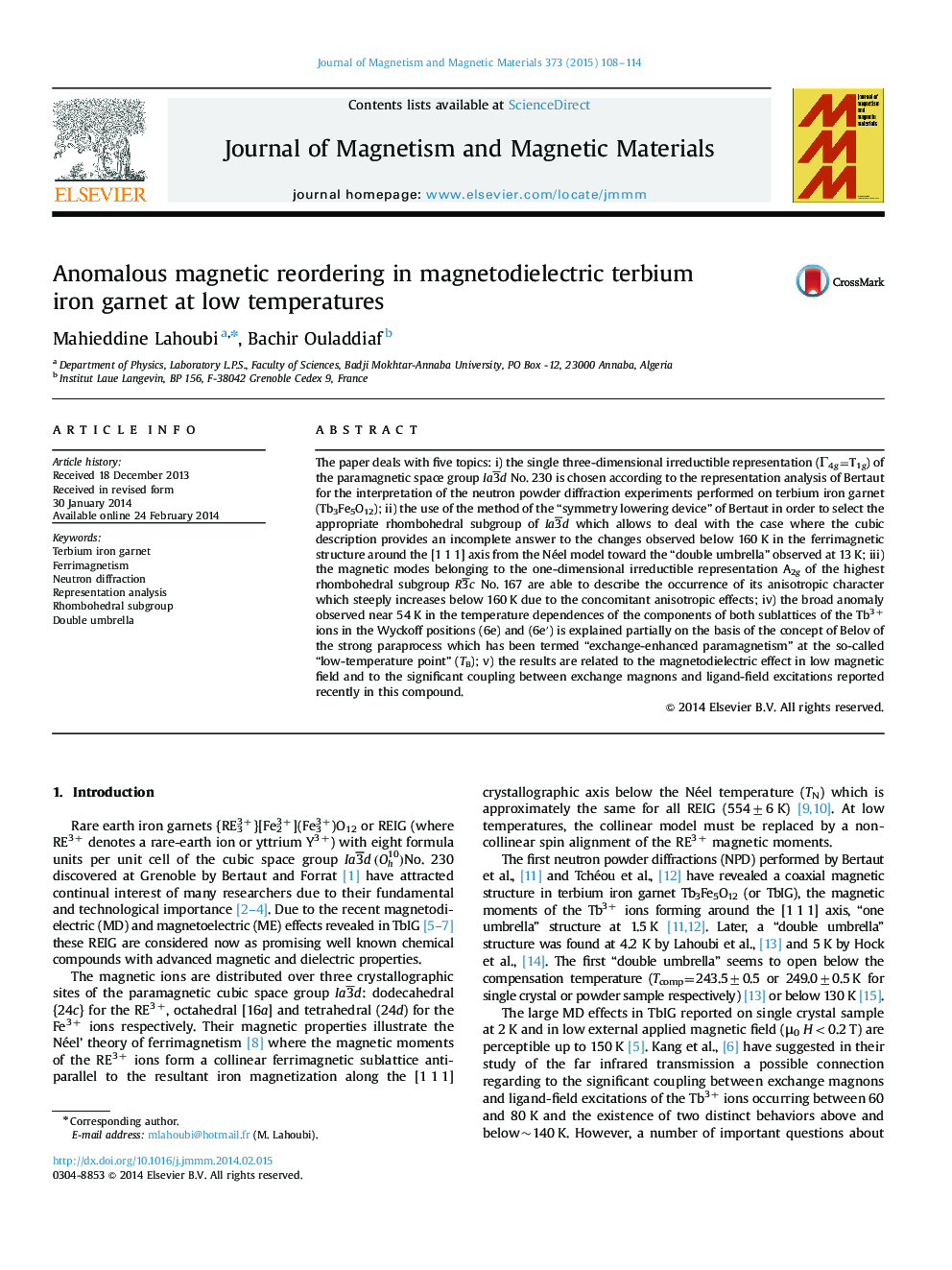| Article ID | Journal | Published Year | Pages | File Type |
|---|---|---|---|---|
| 1799578 | Journal of Magnetism and Magnetic Materials | 2015 | 7 Pages |
•We examine the changes of the “double umbrella” in TbIG using neutron diffraction.•Symmetry arguments of Bertaut clarify suitable rhombohedral space group at 13 K.•Its opening leads to an increasing of anisotropy of the Tb components below 160 K.•The “low-temperature point” of Belov explains partly its intricate behavior near 54 K.•A relationship with the magnetodielectric effects revealed in this garnet is discussed.
The paper deals with five topics: i) the single three-dimensional irreductible representation (Г4g=T1g) of the paramagnetic space group Ia3¯d No. 230 is chosen according to the representation analysis of Bertaut for the interpretation of the neutron powder diffraction experiments performed on terbium iron garnet (Tb3Fe5O12); ii) the use of the method of the “symmetry lowering device” of Bertaut in order to select the appropriate rhombohedral subgroup of Ia3¯d which allows to deal with the case where the cubic description provides an incomplete answer to the changes observed below 160 K in the ferrimagnetic structure around the [1 1 1] axis from the Néel model toward the “double umbrella” observed at 13 K; iii) the magnetic modes belonging to the one-dimensional irreductible representation A2g of the highest rhombohedral subgroup R3¯c No. 167 are able to describe the occurrence of its anisotropic character which steeply increases below 160 K due to the concomitant anisotropic effects; iv) the broad anomaly observed near 54 K in the temperature dependences of the components of both sublattices of the Tb3+ ions in the Wyckoff positions (6e) and (6e′) is explained partially on the basis of the concept of Belov of the strong paraprocess which has been termed “exchange-enhanced paramagnetism” at the so-called “low-temperature point” (TB); v) the results are related to the magnetodielectric effect in low magnetic field and to the significant coupling between exchange magnons and ligand-field excitations reported recently in this compound.
